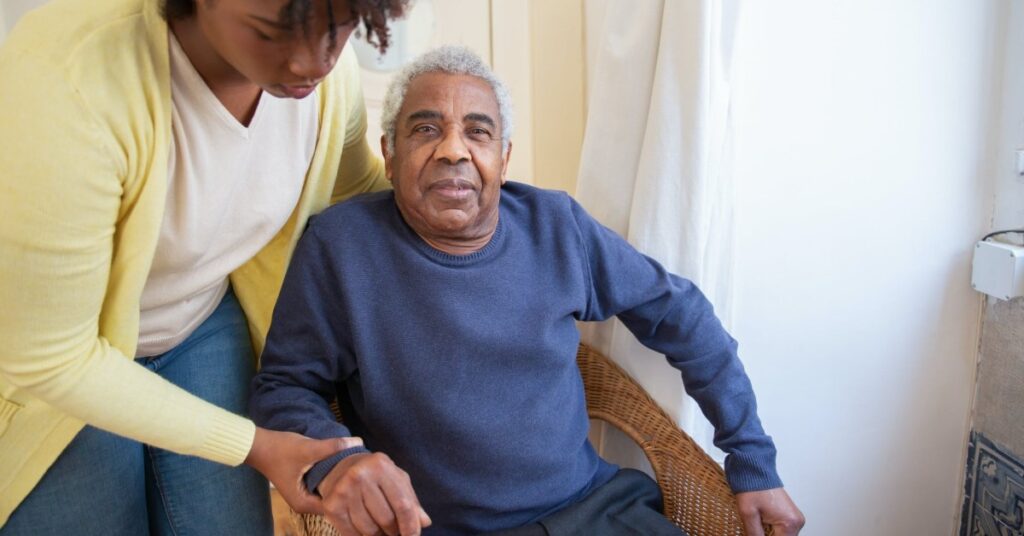
What Are the Qualities You Need to Be an Occupational Therapist?
In addition to having a master's degree, occupational therapists must [...]

In occupational therapy, the first step in any course of treatment is to assess a client’s physical and neurological condition. This initial treatment stage is critical as it establishes a baseline for measuring a client’s progress and the effectiveness of interventions.
To measure progress in occupational therapy treatment, standardized systems must be employed to capture changes in a patient’s level of independence. Numeric scales like the older Functional Independence Measure (FIM) and its more intuitive replacement, the CARE Tool/Section GG, have been used by healthcare professionals, including physical therapists and occupational therapists, to help track progress by assessing a client’s functional mobility in areas like self-care and locomotion.
The American Occupational Therapy Association (AOTA) provides a template for occupational therapists to utilize when assessing clients’ self-care (activities of daily living) and mobility. To assign a client’s score for each self-care (for example, activities of daily living (ADLs) like eating, oral hygiene, and upper body dressing) or mobility (sit to stand, car transfer, and walk 150 feet) item, occupational therapists refer to the Continuity Assessment Record and Evaluation (CARE) scale that defines six levels of assistance, from independent (6), requiring minimal assistance, to dependent (1), requiring total assistance.
Whatare the levels of assistance in occupational therapy? This article enumerates them and also discusses:
The client completes the activity by themselves with no assistance from a helper.
The helper sets up or cleans up, and the client completes the activity. The helper only assists before or following the activity (i.e., the helper can walk away and leave the client to complete the task).
The caregiver provides verbal cues or tactile cues/steadying and/or contact guard assistance as the client completes the activity. Assistance may be provided throughout the activity or intermittently.
The helper contributes less than half of the effort. They lift, hold, or support the client’s trunk or limbs but provide less than half of the effort.
The helper contributesmore than half of the effort. They lift or hold the client’s trunk or limbs and provide more than half the effort.
The helper does all of the effort, while the client does none of the effort to complete the activity. Or, the assistance of two or more helpers is required for the person to complete the activity.
Occupational therapy clients may be recovering from a traumatic brain injury, a fall, or another significant medical condition that requires new adaptive equipment or assistive devices to help with their physical therapy and occupational therapy. These levels of assistance prepare everyone involved in the client’s acute or outpatient care to create an arc for treatment from admission to goal to discharge.
The standardization and consistency in the levels of assistance help the healthcare team function in concert for the patient. Occupational therapists can use the same standards of measure as the physical therapist and physicians, creating a common language and a set of assessment tools.
A Master of Occupational Therapy (MOT) or Master of Science in Occupational Therapy (MSOT) is required for all therapists working as licenced practitioners in the field. While an occupational therapy assistant (OTA) can begin entry-level work with an associate’s or bachelor’s degree, you’ll need to have your master’s degree to take on clinical positions.
Occupational therapy is regulated in each state, as well as in the District of Columbia, Puerto Rico, and Guam, by the Accreditation Council for Occupational Therapy Education (ACOTE). Each state dictates its own licensing requirements. Reach out to your state’s occupational therapy regulatory agency for specific guidelines.
In addition to completing your master’s degree, you must pass the National Board of Certification in Occupational Therapy (NBCOT) examination in order to be licensed to practice.
It typically takes about two years to complete a master’s in occupational therapy, but program lengths vary depending on the OT school. At the University of Pittsburgh’s School of Health and Rehabilitation Sciences, you can pursue a master’s or a doctoral degree in occupational therapy. At Pitt, you can earn your MSOT in one year (30 credits over two terms) in their advanced standing program, provided you already have your bachelors in OT and are working in the field. Other schools offer different timelines, but typically include accelerated programs and flexible tracks of study.
Most OT programs require either a bachelor’s degree in occupational therapy (or related health science) or prerequisite coursework in human anatomy and physiology, behavioral science, abnormal psychology, human development, and statistics before starting your occupational therapy coursework.
Applicants also need to submit official transcripts from all universities and colleges attended (showing a GPA of 3.0 or more), letters of recommendation from professors or supervisors (typically three), proof of relevant work experience (which should include at least 20 documented observation hours), and a personal statement of purpose. Most programs accept the common application offered by the Occupational Therapist Centralized Application Service (OTCAS).
International students must meet additional requirements. They must demonstrate English language proficiency and hold o a bachelor’s from a program approved by the World Federation of Occupational Therapists (WFOT).
Coursework for this degree includes clinical and professional reasoning, functional anatomy, assessment in occupational therapy, mental and behavioral health, therapeutic approaches, biomechanical and neurorehabilitation theory and practice, and productive aging theory. Clinical work with patients is a large component of the curriculum. Fieldwork occurs concurrently with coursework.
Occupational therapists develop areas of specialization after graduating from a master’s program and working in a specialized field. OTs can earn certificates through American Council for Occupational Therapy Education (ACOTE) in areas like pediatrics, speech therapy, autism, mental health, brain injury, and research.
Some top occupational therapy master’s programs include:
(Last Updated on February 26, 2024)
Questions or feedback? Email editor@noodle.com

In addition to having a master's degree, occupational therapists must [...]

Becoming a licensed clinical social worker (LCSW) requires a Master [...]

Earning a Doctor of Social Work (DSW) allows social workers [...]

It's tough to balance work and life obligations with a [...]

The healthcare profession offers many career options, from health services [...]
Categorized as: Occupational & Behavioral Therapy, Nursing & Healthcare